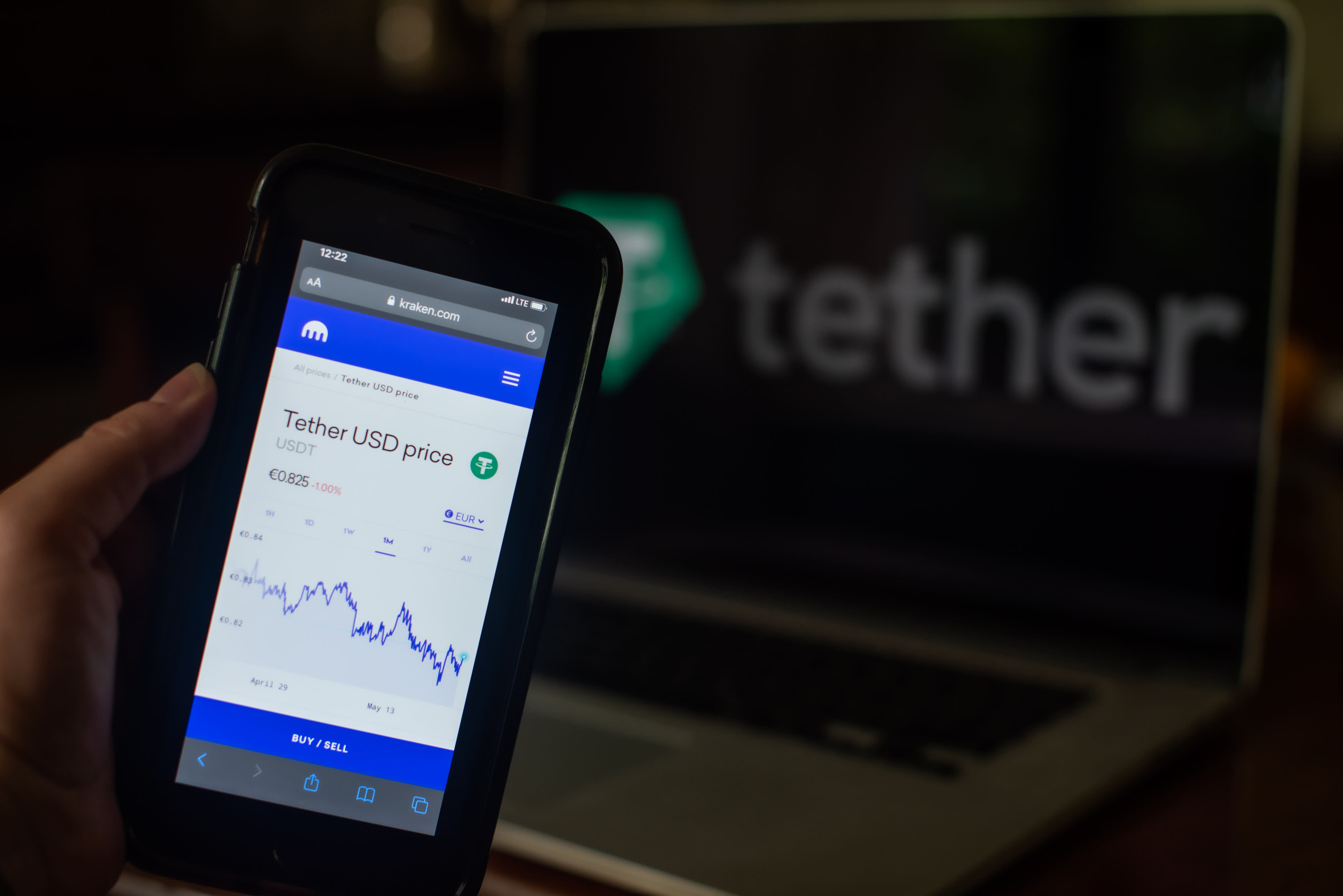Tether is the third-biggest cryptocurrency in the world by market value. And it’s got some economists — including an official at the U.S. Federal Reserve — worried.
Last month, Boston Fed President Eric Rosengren raised the alarm about tether, calling it a potential financial stability risk. Meanwhile, some investors believe a loss of confidence in tether could be crypto’s “black swan,” an unpredictable event that would severely impact the market.
The issues surrounding tether hold significant implications for the nascent cryptocurrency world. And economists increasingly fear that it could also impact markets beyond digital currencies. Here’s what you need to know:
What is tether?
Chances are you’ve heard a thing or two about bitcoin. But what about tether?
Like bitcoin, tether is a cryptocurrency. In fact, it’s the world’s third-biggest digital coin by market value. But it’s very different from bitcoin and other virtual currencies.
Tether is what’s known as a stablecoin. These are digital currencies that are tied to real-world assets — the U.S. dollar, for example — to maintain a stable value, unlike most cryptocurrencies which are known to be volatile. Bitcoin, for example, rose to an all-time high of nearly $65,000 in April and has since almost halved in value.
Tether was designed to be pegged to the dollar. While other cryptocurrencies often fluctuate in value, tether’s price is usually equivalent to $1. This isn’t always the case though, and wobbles in the value of tether have spooked investors in the past.
Crypto traders often use tether to buy cryptocurrencies, as an alternative to the greenback. This essentially provides them with a way to seek safety in a more stable asset during times of sharp volatility in the crypto market.
However, crypto isn’t regulated, and many banks avoid doing business with digital currency exchanges due to the level of risk involved. That’s where stablecoins tend to come in.
Why is it controversial?
Some investors and economists are worried tether’s issuer doesn’t have enough dollar reserves to justify its dollar peg.
In May, Tether broke down the reserves for its stablecoin. The firm revealed that only a fraction of its holdings — 2.9%, to be exact — were in cash, while the vast majority was in commercial paper, a form of unsecured, short-term debt.
That would place Tether in the top 10 biggest holders of commercial paper in the world, according to JPMorgan. Tether has been compared to traditional money-market funds — but without any regulation.
With more than $60 billion worth of tokens in circulation, Tether has more deposits than that of many U.S. banks.
There have long been concerns about whether tether is being used to manipulate bitcoin prices, with one study claiming the token was used to prop up bitcoin during key price declines in its monster 2017 rally.
Earlier this year, the New York attorney general’s office reached a settlement with Tether and Bitfinex, an affiliated digital currency exchange.
The state’s top law enforcement official had accused the firms of moving hundreds of millions of dollars to cover up $850 million of losses.
Tether and Bitfinex agreed to pay $18.5 million in the settlement and were barred from operating in New York state, however the companies didn’t admit to any wrongdoing.
Market contagion
Analysts at JPMorgan have previously warned that a sudden loss of confidence in tether could result in a “severe liquidity shock to the broader cryptocurrency market.”
But there are also concerns that a sudden increase of tether withdrawals could lead to a potential market contagion, affecting assets beyond crypto.
In June, Rosengren mentioned tether and other stablecoins as one of several potential risks to financial stability.
“These stablecoins are becoming more popular,” he said during a presentation.
“A future crisis could easily be triggered as these become a more important sector of the financial market, unless we start regulating them and making sure that there’s actually a lot more stable stability to what’s being marketed to the general public as a stablecoin,” Rosengren added.
Last week, Fitch Ratings warned a sudden mass redemption of tether tokens could destabilize short-term credit markets.
“Fewer risks are posed by coins that are fully backed by safe, highly liquid assets, although authorities may still be concerned if the footprint is potentially global or systemic,” the U.S. credit rating agency said.
“Whereas stablecoins that use fractional reserves or adopt higher-risk asset allocation may face a greater run risk.”
Tether isn’t the only stablecoin out there, but it’s by far the biggest and most popular one. Others include USD Coin and Binance USD.
